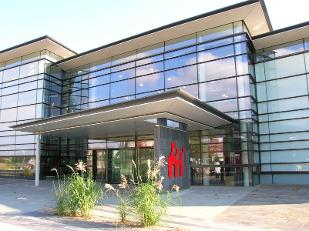Boosting tourism begins at home
South Wales Evening Post - 22 April 2014
Anyone traipsing around with families in tow during the Easter hols will know that there is no more glorious a place than Swansea & Gower when the sun shines – and nowhere less fun when the more traditional Welsh weather falls from the skies.
For a place that can lay claim to being one of wettest spots in the UK, its remarkable how little we invest in all-weather tourism.
Last week the media was full of excitement as to how crowds are set to flock to south-west Wales to visit local attractions.
Truth be told however, very little of what’s on offer is of our making. The glorious beaches, breathtaking landscapes and even our amazing show caves are all the work of a much higher power, when you think about it. We’re just lucky enough to live here.
We all talk a good fight about promoting tourism. Yet when someone proposes a new attraction or resort, the default position is to stage a protest and ask questions later. Just ask the people behind Bluestone.
There are plenty of estimates around on how tourism benefits the UK economy. The one that stands out for me is £20 billion in annual revenue which makes it the sixth largest sector.
Another telling statistic is that big-spending foreign tourists are more likely to arrive in our regions by coach rather than by rail or air. They will be on a high-value package deal, probably Chinese, and likely to put an average of £1690 per visitor into the local economy compared with £570 for EU and US tourists.
Any visitors of this calibre that we’d like to attract to Wales will already have the London Eye and the Houses of Parliament on their itinerary along with visits to Oxford and Stratford-upon-Avon.
So how do we compete?

Tourism a more global market than ever
OK, the big enticement this year is the Dylan Thomas centenary. But who says that Wales is the only place where you can mark the great man’s birth? I currently have flyers in my email promoting events in New York, Chicago and London.
A local council scrutiny committee asked last year if we’re making the most of Swansea’s tourism potential. They concluded that a lot more can be done. The surprise was that they pinned much of their hopes on something called a ‘Destination Management Plan’

Missing in action: National Waterfront Museum
To be honest, I’m not sure either how the city’s tourism businesses are supposed to benefit from the creation of a Sustainable Transport Plan and a Signage Review which are required to align with 23 other existing ‘strategies and initiatives’.
There also has to put a question mark against the relative value of a document that lists the LC as a major attraction but makes no mention at all of the excellent National Waterfront Museum located just alongside.
A colleague of mine who specialises in overseas marketing is convinced that we need fresh blood & fresh thinking in order to showcase the region to travel operators in Russia, India, China and Brazil where new wealth is producing a massive tourist market.
Something else he’s keen to emphasise is that personal experience is still a hugely important factor in tourism promotion and especially in these days of on-line visitor reviews.
He pointed out one comment to me on a travel website which reads, “You can have a great time on Swansea’s foreshore if you’re not bothered about parking half a mile away, never have to visit the loo and you’re prepared to take all your rubbish home with you because litter bins don’t get emptied on Bank Holidays”.
Maybe managing a destination is just as important as marketing after all. For me however, tackling such negative perceptions through a bit of basic action seems a more obvious place to start.
Some ambition in terms of a covered shopping centre wouldn’t hurt either.